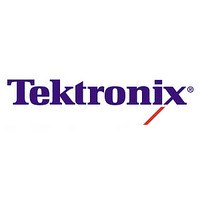MDO4054-3GSA Tektronix, MDO4054-3GSA Datasheet - Page 6

MDO4054-3GSA
Manufacturer Part Number
MDO4054-3GSA
Description
Specifications: Scope Type: Bench ; Scope Channels: 4 Analogue + 16 Digital + 1 RF ; Bandwidth: 500MHz ; Meter Display Type: XGA TFT-LCD Color ; Sampling Rate: 2.5GSPS ; Input Impedance: 1Mohm ; Rise Time: 700ps ; Input Voltage: 300Vrms ; Supply Volt
Manufacturer
Tektronix
Datasheet
1.MDO4054-3GSA.pdf
(20 pages)
Data Sheet
Spectrogram display illustrates slowly moving RF phenomena. As shown here, a signal
that has multiple peaks is being monitored. As the peaks change in both frequency and
amplitude over time, the changes are easily seen in the Spectrogram display.
Spectrogram
The MDO4000 Series includes a spectrogram display which is ideal
for monitoring slowly changing RF phenomena. The x-axis represents
frequency, just like a typical spectrum display. However, the y-axis
represents time, and color is used to indicate amplitude.
Spectrogram slices are generated by taking each spectrum and “flipping
it up on its edge” so that it’s one pixel row tall, and then assigning colors
to each pixel based on the amplitude at that frequency. Cold colors
(blue, green) are low amplitude and hotter colors (yellow, red) are higher
amplitude. Each new acquisition adds another slice at the bottom of the
spectrogram and the history moves up one row. When acquisitions are
stopped, you can scroll back through the spectrogram to look at any
individual spectrum slice.
Triggered vs. Free Run Operation
When both the time and frequency domains are displayed, the spectrum
shown is always triggered by the system trigger event and is time correlated
with the active time-domain traces. However, when only the frequency
domain is displayed, the RF input can be set to Free Run. This is useful
when the frequency domain data is continuous and unrelated to events
occurring in the time domain.
6
www.tektronix.com
Spectral display of a bursted communication both into a device through Zigbee at 900 MHz
and out of the device through Bluetooth at 2.4 GHz, captured with a single acquisition.
Ultra-wide Capture Bandwidth
Today’s wireless communications vary significantly with time, using
sophisticated digital modulation schemes and, often, transmission
techniques that involve bursting the output. These modulation schemes can
have very wide bandwidth as well. Traditional swept or stepped spectrum
analyzers are ill equipped to view these types of signals as they are only
able to look at a small portion of the spectrum at any one time.
The amount of spectrum acquired in one acquisition is called the capture
bandwidth. Traditional spectrum analyzers sweep or step the capture
bandwidth through the desired span to build the requested image. As a
result, while the spectrum analyzer is acquiring one portion of the spectrum,
the event you care about may be happening in another portion of the
spectrum. Most spectrum analyzers on the market today have 10 MHz
capture bandwidths, sometimes with expensive options to extend that to 20,
40, or even 140 MHz in some cases.
In order to address the bandwidth requirements of modern RF, the
MDO4000 Series provides ≥1 GHz of capture bandwidth. At span settings
of 1 GHz and below, there is no requirement to sweep the display. The
spectrum is generated from a single acquisition, thus guaranteeing you’ll
see the events you’re looking for in the frequency domain.














